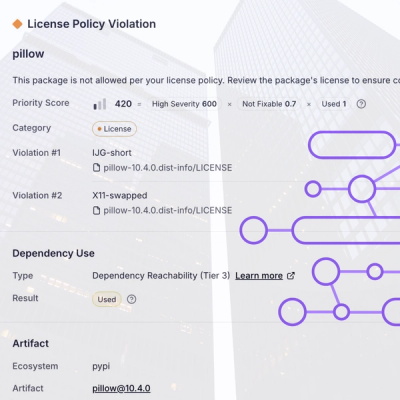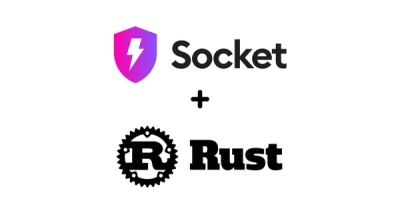
Research
/Security News
Critical Vulnerability in NestJS Devtools: Localhost RCE via Sandbox Escape
A flawed sandbox in @nestjs/devtools-integration lets attackers run code on your machine via CSRF, leading to full Remote Code Execution (RCE).
The cw-rpa package provides reusable functions/common utilities for developing CW RPA bots.
RPA Library is a comprehensive Python library designed to empower partners to efficiently development of Robotic Process Automation (RPA) solutions. This library provides essential functionalities and utilities, simplifying the RPA development process. This library provides a set of modules that streamline the process of automating tasks, managing inputs, logging, and interacting with web services.
The RPA Library consists of several key modules, each designed to offer specific functionalities that aid in the development of RPA solutions. Below is an overview of the available modules and their primary features.
The Input Module is designed to handle user inputs efficiently. It provides functionalities for collecting, and processing inputs from form data.
#Import the library.
from cw_rpa import Input
#Initialize the module.
input = Input()
#Calling the input method.
input.get_value("<variable name>")
E.g.
username = input.get_value("username")
Note: If the variable is missing, it defaults to None.
The Logger Module offers advanced logging capabilities, making it easier to track the execution flow, debug issues, and maintain operational records.
#Import the library.
from cw_rpa import Logger
#Initializing the logger
log = Logger()
#Call log method to log in Result.txt
#To log an info message
log.info("Logging info statement")
#To log an error message
log.error("Logging error statement")
#To log an exception message
log.exception("Logging exception statement")
Additionally, it supports logging warnings, critical and fatal into Result.txt
Note: A fatal log will exit the program.
#Call log method to log in result.json
#To log success message
log.result_success_message("log success message")
#To log failure message
log.result_failed_message ("log failed message")
Additionally import ResultLevel
from cw_rpa import Logger,ResultLevel
and use result_message to update the message level on result.json
SUCCESS
FAILED
ERROR
INFO
WARNING
log.result_message(ResultLevel.SUCCESS,"message")
log.result_message(ResultLevel.FAILED,"message")
log.result_message(ResultLevel.ERROR,"message")
log.result_message(ResultLevel.INFO,"message")
log.result_message(ResultLevel.WARNING,"message")
#Call result_data to log the values into the data field in result.json which is used by workflow.
data_to_log = {"<key>" : <value>} #data_to_log is a json object
log.result_data(data_to_log)
The HttpClient Module simplifies interactions with web services. It provides a straightforward way to send HTTP requests and handle responses. It Support for various HTTP methods (GET, POST, PUT, DELETE, etc.) and provides mechanisms for managing authentication tokens, essential for interacting with secured APIs.
#Import library
from cw_rpa import httpclient
#Initialize the module.
http_client = HttpClient()
#Validate url.
http_client.validate_url("https://www.cw.com")
#Validate payload
#Ensures the payload or request body contains all necessary fields through validation.
E.g.
request_body = {
"accountEnabled": input.get_value("accountEnabled"),
"displayName": input.get_value("displayName"),
"mailNickname": input.get_value("mailNickname")
}
#Here, request_body must include displayName and mailNickname. Their absence will result in an error.
http_client.validate_payload(request_body, ["displayName","mailNickname" ])
#Third party integration
#Enables integration connectivity and API execution.
Syntax:
http_client.third_party_integration("<integrationName>").<method>(url=<endpoint url/api>,json=<request body>)
Faster Development: Pre-built components and utilities accelerate the development lifecycle.
Improved Code Quality: Standardized functions promote code maintainability and reusability.
Focus on Core Logic: Partners can concentrate on building the unique logic of their bots, leveraging the foundation provided by RPA Library.
To get started with the RPA Library, you need to install it in your Python environment. You can do this by installing it directly via pip.
Installation:
if hosted in public repo:
pip install cw_rpa
From wheel file:
pip install cw_rpa-0.1.0-py3-none-any
Here are example demonstrating how to create the bot using the cw_rpa library:
# import the rpa library modules
from cw_rpa import (
Logger,
ResultLevel,
Input,
HttpClient,
)
def main():
log = Logger()
try:
input = Input()
# The following keys should be present in the fromSchema.json file
userPrincipalName = input.get_value("userPrincipalName")
new_user_payload = {
"accountEnabled": input.get_value("accountEnabled"), # Default value is True if not provided
"displayName": input.get_value("displayName"),
"mailNickname": input.get_value("mailNickname"),
"userPrincipalName": userPrincipalName,
"passwordProfile": {
"forceChangePasswordNextSignIn": input.get_value("forceChangePasswordNextSignIn"),
"password": input.get_value("password"),
},
}
except Exception as e:
log.exception(e, "An error occurred while getting input values")
log.result_failed_message("An error occurred while getting input values")
return
if not userPrincipalName:
log.error("userPrincipalName not provided")
log.result_failed_message("userPrincipalName not provided")
return
log.info(f"creating user details for userPrincipalName: {userPrincipalName}")
try:
# Create an HTTP client for making requests to the Microsoft Graph API
http_client = HttpClient()
# Define the endpoint for retrieving user details
endpoint = "https://graph.microsoft.com/v1.0/users"
if check_user_exists(log, http_client, userPrincipalName):
log.error(f"User already exists: {userPrincipalName}")
log.result_failed_message(f"User already exists: {userPrincipalName}")
return
log.info(f"Creating user: {userPrincipalName}")
log.result_message(ResultLevel.INFO,f"Creating user: {userPrincipalName}")
# validating new user payload
http_client.validate_payload(new_user_payload, ["displayName","accountEnabled", "passwordProfile.forceChangePasswordNextSignIn", "passwordProfile.password"])
# Make a GET request to the endpoint
response = http_client.third_party_integration("azure_o365").post(url=endpoint, json=new_user_payload)
if response.status_code == 201:
log.info(f"User created successfully: {userPrincipalName}.")
log.result_success_message(f"Successfully created user: {userPrincipalName}.")
log.result_data(data=response.json())
else:
log.error(f"Failed to create user {userPrincipalName}. Status code: {response.status_code}, Response: {response.text}")
log.result_failed_message(f"User creation failed for user {userPrincipalName}.")
except Exception as e:
log.exception(e, "An unexpected error occurred while creating the user")
log.result_failed_message(f"An error occurred while creating the user {userPrincipalName}.")
return
def check_user_exists(log:Logger, http_client: HttpClient, userPrincipalName: str) -> bool:
try:
# Define the endpoint for retrieving user details
endpoint = f"https://graph.microsoft.com/v1.0/users/{userPrincipalName}"
response = http_client.third_party_integration("azure_o365").get(endpoint)
if response.status_code == 200:
log.info(f"User exists: {userPrincipalName}")
return True
elif response.status_code == 404:
log.info(f"User does not exist: {userPrincipalName}")
return False
else:
log.error(f"Failed to check if user exists: {response.text}")
return False
except Exception as e:
log.exception(e, "An error occurred while checking if user exists")
return False
if __name__ == "__main__":
main()
Custom Bot Development Documentation: https://docs.connectwise.com/ConnectWise/Asio/Hyperautomation/ConnectWise_RPA/Using_ConnectWise_RPA_Bots_in_PSA/How_to_Write_a_Custom_Bot
Sample Custom Bot Documentation: https://docs.connectwise.com/ConnectWise/Asio/Hyperautomation/ConnectWise_RPA/Using_ConnectWise_RPA_Bots_in_PSA/How_to_Write_a_Custom_Bot/Sample_Custom_Bots_-_Asio_Workflows
FAQs
The cw-rpa package provides reusable functions/common utilities for developing CW RPA bots.
We found that cw-rpa demonstrated a healthy version release cadence and project activity because the last version was released less than a year ago. It has 1 open source maintainer collaborating on the project.
Did you know?

Socket for GitHub automatically highlights issues in each pull request and monitors the health of all your open source dependencies. Discover the contents of your packages and block harmful activity before you install or update your dependencies.

Research
/Security News
A flawed sandbox in @nestjs/devtools-integration lets attackers run code on your machine via CSRF, leading to full Remote Code Execution (RCE).

Product
Customize license detection with Socket’s new license overlays: gain control, reduce noise, and handle edge cases with precision.

Product
Socket now supports Rust and Cargo, offering package search for all users and experimental SBOM generation for enterprise projects.